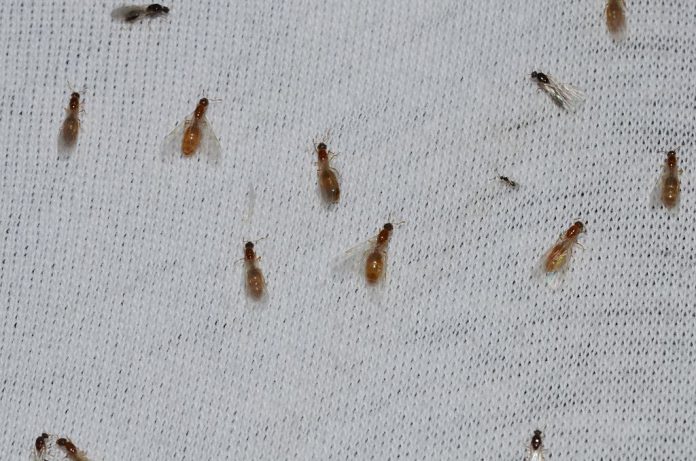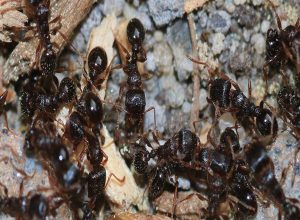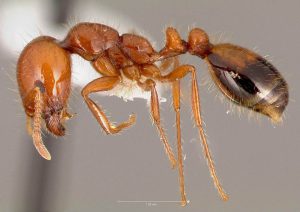New Mexico has an abundance of ants. There are over 700 species in this state. Ranking as the 5th largest state in the U.S. based on total area, it isn’t surprising to find such an abundance of these creepy crawlies.
Furthermore, the different terrains of mountains, grasslands, and deserts, allow the diversity of species to thrive. You can visit roohome.com to learn more about New Mexico. As a result, these insects play different roles in the environment.
While it might be challenging to discuss all the species of ants that make the state of New Mexico their home, we can easily discuss the common ones. Therefore, in this article, we will talk about the common types of ants in New Mexico. If you’re ready to learn something new, let’s get started…
Thief Ants
Solenipsis molesta (botanical name) are not very large insects (just 1/16th inch long) but their activities are felt in the environment. They are called “thief ants” because they steal pupae and food from other ant colonies. The workers of these brownish-black or yellowish-brown insects all have the same look.
Furthermore, they do not have a queen caste. This means that there are several queens (but not more than eight) in a single nest. Their small size allows them to build their nests in different places.
Rather than having a centralized nest, they create diffused colonies in wall voids, rotting wood, and the soil. So, you shouldn’t be surprised to see them in your home. Due to their stealing habit, their nests are usually close to the nests of other ant colonies.
Unlike most other type of ants, food foraging is done individually rather than in groups. (Possibly to facilitate easy escape after the theft is committed). Their targets are meats, fruits, sweets, seeds, dead insects, oils, and fats.
If they find themselves in a person’s home, they don’t mind eating whatever you’re having for dinner. While they are not picky eaters, they have a preference for greasy foods which is the reason they are also called greasy ants. Also, they like items with high-protein; so, do all you can to keep them away from your meat and fish.
The nests are not fixed in a particular location. This means you might find them here today and discover they’re no longer there the next day. This makes it difficult to exterminate them when they infest your home.
However, you can still deduce their nesting spots due to their preference for heat sources. You can check out the Albuquerque pest control company to learn how these professional exterminators determine where a nest is located. Therefore, check out areas with appliances that produce heat or hot water pipes.
Solenipsis molesta is not averse to co-existing with ants that can damage the structure of your home. This partnership allows them to easily build their nests in those areas in your home we listed above. As such both species when in partnership can constitute a real nuisance in your home.
If you leave them alone, they won’t sting. However, the fatty foods in your home will be stolen bit by bit at night by the foraging workers. When they do this, they can contaminate these items with fungi, bacteria, etc. Therefore, eliminating these pests is crucial to protect your family from falling sick.
Pavement Ants
Tetramorium caespitum are small brown or black ants that are known for nesting under or in pavement cracks. Their colonies are usually large with more than 10,000 workers and several queens. Their nests have underground chambers and tunnels. These all lead to a single mound entrance made from excavated sand or dirt.
You can find the nests beside walls, foundations, driveways, sidewalks, etc. They are omnivorous, as such they will forage anything they come across. This includes meats, grease, sugary substances such as aphids’ honeydew, seeds, dead insects, etc. If they are inside homes, they will go after oily, greasy, and sweet foods.
They can track food by following the scent along cracks and edges. These creepy crawlies don’t depend on water sources as they drive fluids from the high-moisture content foods they eat. They forage in warm months and hibernate during winter.
Tetramorium caespitum can be aggressive when its home is under attack and will readily bite anyone disturbing it. Apart from biting with their jaws, they can also sting you with their abdomen. Another defense mechanism is their ability to spray acids.
Their stings and bites will result in red welts that will itch the skin. You can read this post to learn how to treat itchy ant bites. While they won’t damage the structure of your house, these pests can be quite a nuisance. For instance, even your packaged foods are not safe from them as they’ll find a way to get in if they desire.
Southern Fire Ant
The Solenopsis xyloni is a reddish-orange ant that is about ¼ of an inch. You can easily identify one thanks to its large, squared-head shape. Their colonies are usually found under plant bases, in decaying logs, under boards, and rocks.
The mounds of the colonies have a diameter range of about 6 inches to 2 feet. You can find hundreds of thousands of workers and several queens. These insects are fiercer in protecting their territories compared to pavement ants.
Foraging is done in the daytime with warm soil temperatures. They forage for plant nectars, fats, oils, sweets, mites, ticks, etc. This means they are equipped with venomous stings that can kill these preys. The stings are also used for defending the nest and can lead to a burning raised skin welt and can be problematic when one is stung multiple times.
You can find Solenopsis xyloni in pastures, parks, and lawns. Their moulds are strong enough to damage your mowing equipment and the disturbance can cause them to attack you. Therefore, if you see such a mount on your lawn, it’s best you call the services of professional pest exterminators.
Conclusion
For all its diverse landscape and large land area, the presence of several ant species in New Mexico is not surprising. Although there are over 700 species, this article has focused on three common types. The information we’ve shared should give you a basic understanding of the activities of these insects.

















